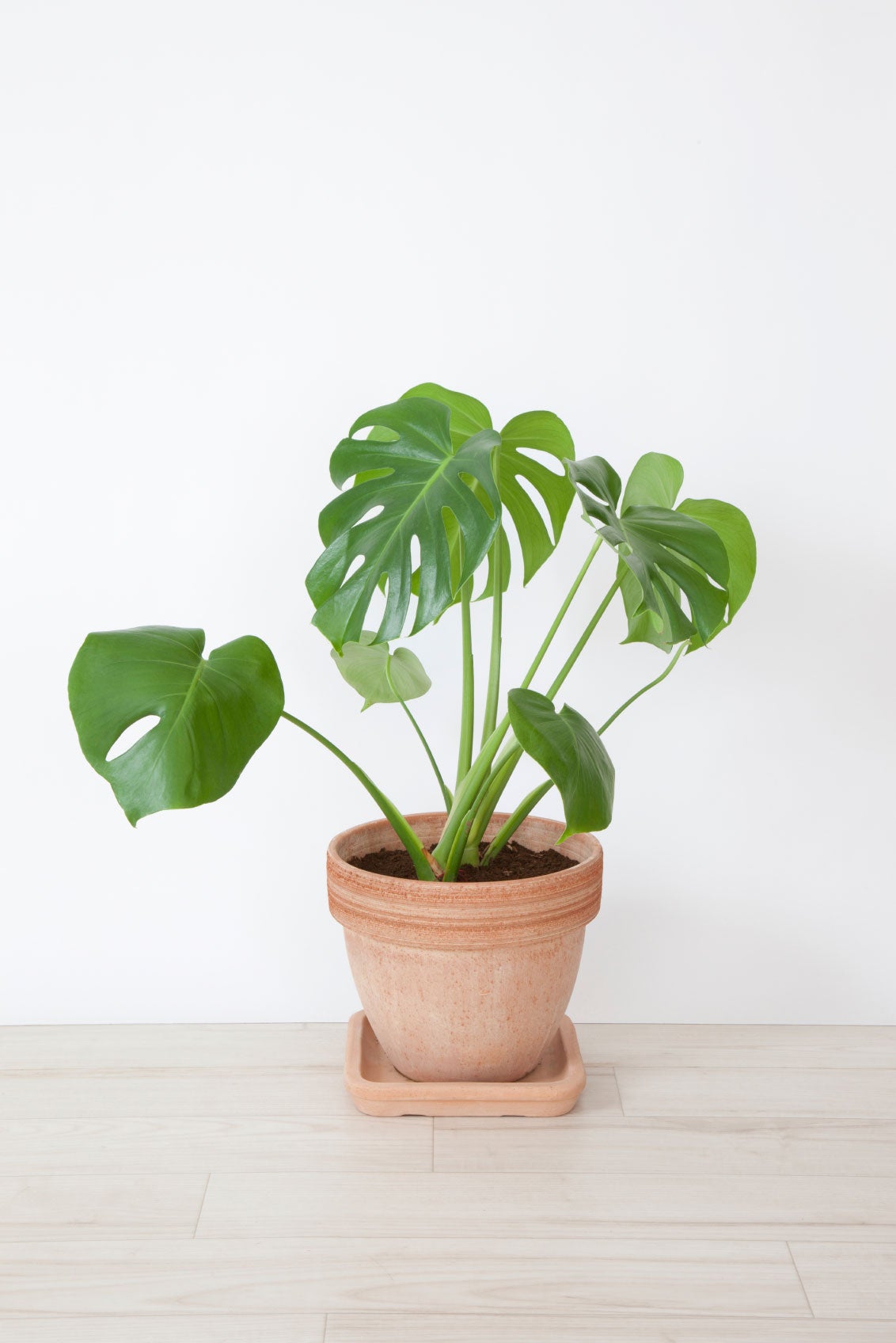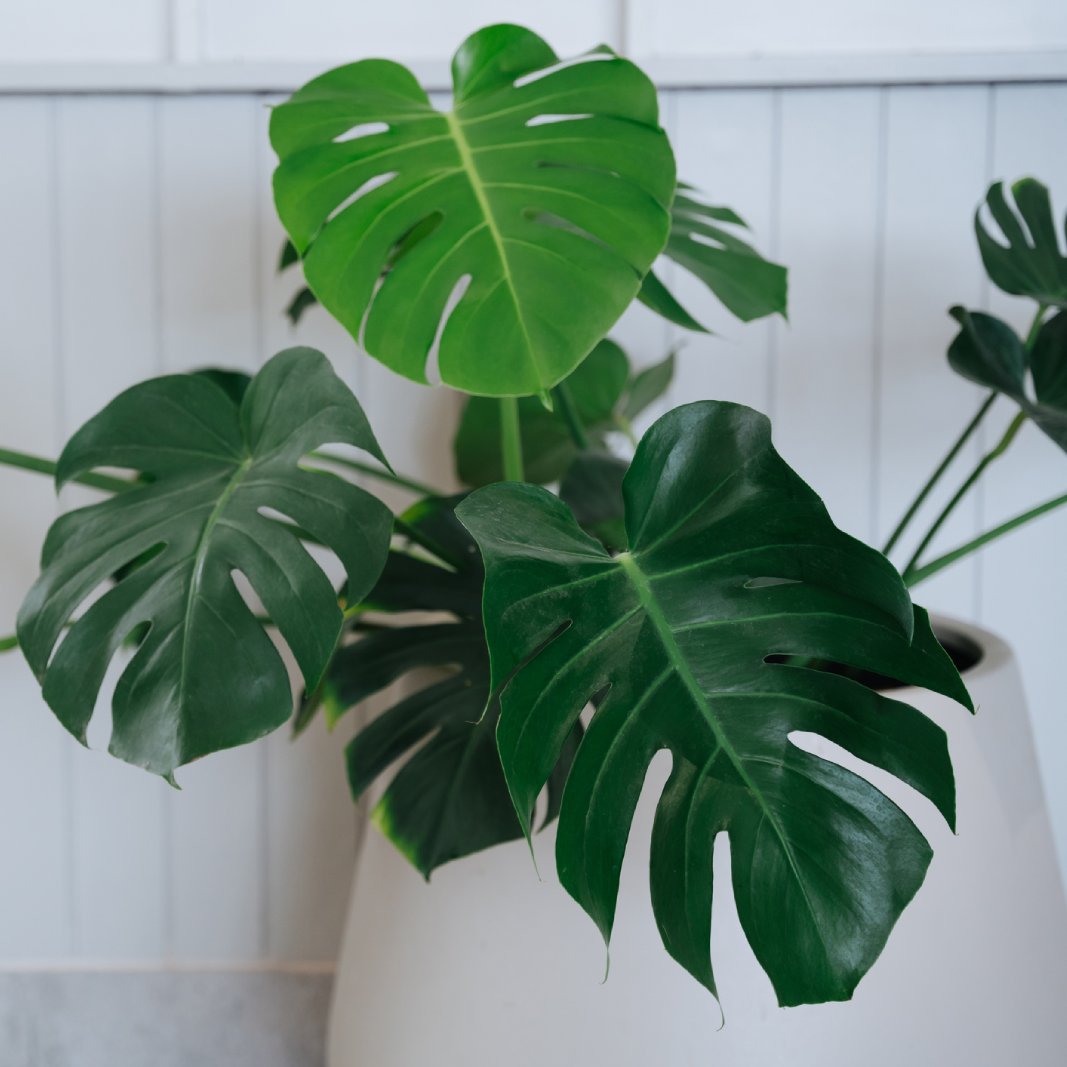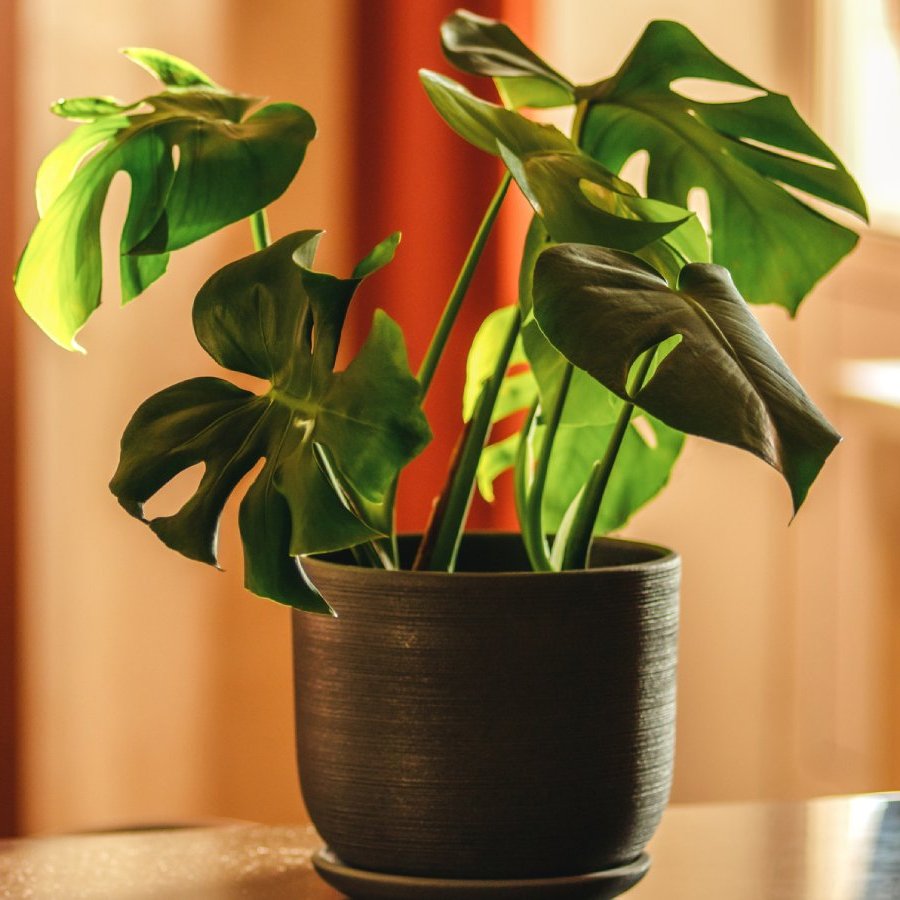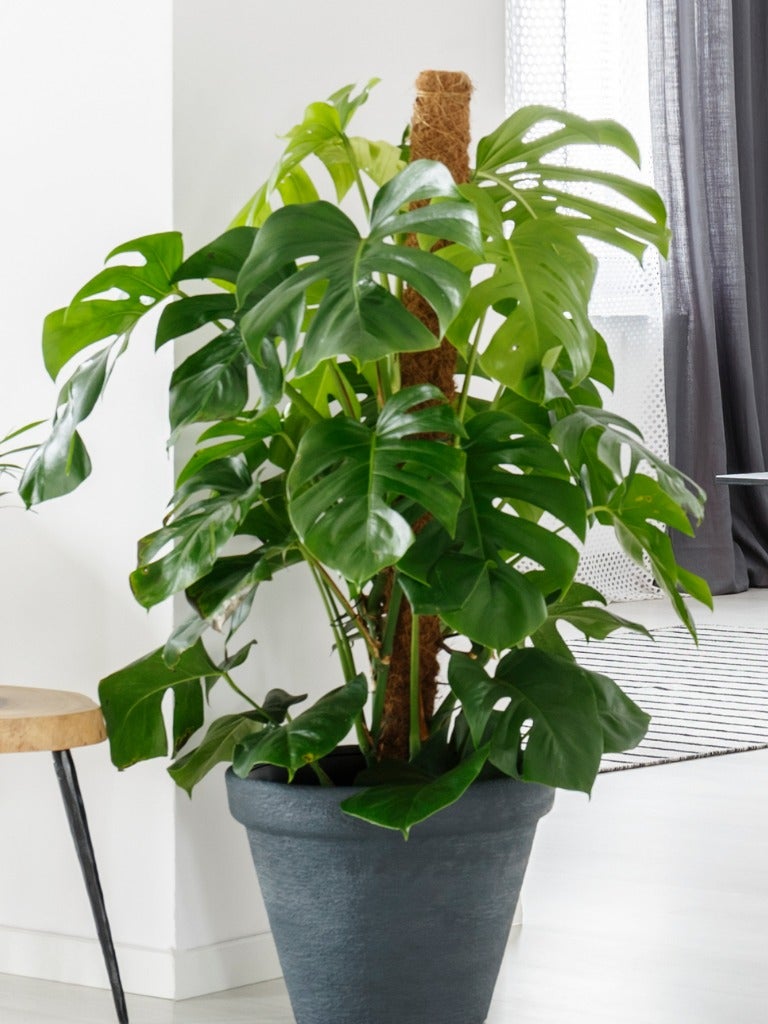Repotting Cheese Plants: How And When To Repot Monstera


One of the classic houseplants is the tropical split-leaf philodendron. Also known as the Swiss cheese plant, this beauty is an easy to grow, large-leaved plant with characteristic splits in the leaves.
It should be repotted every few years to ensure adequate soil nutrition and space for the rapidly growing plant. Learn how to repot a Swiss cheese plant including suitable soil, space, and staking, for a long-lived, healthy specimen that graces your home or office.
Tropical Monstera plants (Monstera deliciosa) thrive in most home interiors. The plants are thick-stemmed vines that support themselves on other vegetation in nature and produce long roots from the stem to supplement that support.
Houseplant Monstera may require staking but they still produce stiff roots from the trunk. This can make repotting cheese plants something of a challenge.
When to Repot Monstera
Monstera plant care is relatively low maintenance. The plant needs warm interior temperatures of at least 65 degrees Fahrenheit (18 C.) or warmer. Swiss cheese plant also needs moderately moist soil and high humidity. The aerial roots need something to hang on to, so a wooden or moss-covered stake set into the middle of the pot will provide the extra support.
Repotting cheese plants is done every year when the plant is young to encourage growth and freshen the soil. Go up in container size until you reach the largest pot you wish to use. Thereafter, the plant needs a fresh top-dress of rich soil annually but will be content for several years at a time even if it is root-bound.
Early spring before new leaves occur is when to repot Monstera for the best results.
Gardening tips, videos, info and more delivered right to your inbox!
Sign up for the Gardening Know How newsletter today and receive a free copy of our e-book "How to Grow Delicious Tomatoes".
How to Repot a Swiss Cheese Plant
Swiss cheese plant is a tropical jungle plant and as such requires rich, nutrient-dense soil that holds moisture yet doesn't remain soggy. A standard good quality potting soil is fine, with the addition of some peat moss.
Choose a pot that has plenty of drainage holes and a depth deep enough to accommodate a thick stake. Fill the bottom third of the pot with the soil mixture and set the stake into the center lightly.
Repotting cheese plants that are very mature and tall, will require a second pair of hands to help support the upper regions during the potting process. Set the base of the plant into the container so the original soil line on the plant is a touch below where the new line will be. Fill in around the base roots and any aerial roots that reach into the soil. Firm up the potting mix around the stake and use plant ties to attach the stem to the stake.
Post Potting Monstera Plant Care
Water the pot deeply right after potting. Wait a week or two and then resume a monthly feeding with liquid fertilizer during watering.
Swiss cheese plant may simply get too big for its britches. The plant is known in its habitat to reach 10 feet (3 m.) tall or more. In the home environment, this is generally too tall, but the plant responds well to trimming and you can even keep any cuttings and start them for a new plant.
Keep the leaves wiped clean and watch for spider mite infestations. This glossy foliage plant has a long life span and will reward you with its enchanting lacy leaves for years and years with good care.

Bonnie Grant is a professional landscaper with a Certification in Urban Gardening. She has been gardening and writing for 15 years. A former professional chef, she has a passion for edible landscaping.
-
 Looking For Plants To Give You The Soft And Fuzzies? Try These 5 Fuzzy Leaf Plant Options
Looking For Plants To Give You The Soft And Fuzzies? Try These 5 Fuzzy Leaf Plant OptionsLovers of texture, drama, silver foliage and tactile plants will adore these special sensory garden additions. These fuzzy leaf plant options will leave you all aglow
By Susan Albert
-
 Get Ready For A Summer Of Hummers! Grow These Full Sun Hummingbird Plants and Flowers
Get Ready For A Summer Of Hummers! Grow These Full Sun Hummingbird Plants and FlowersIf you’re lucky enough to enjoy a sunny backyard, make sure you are maxing out on your pollinator opportunities and grow these full sun hummingbird plants and flowers
By Tonya Barnett
-
 Monstera Esqueleto Care Guide
Monstera Esqueleto Care GuideMonstera esqueleto is a high-drama houseplant with natural holes in its leaves. It loves to climb and enhance your living space with its big evergreen presence.
By Susan Albert
-
 Why Is My Monstera Not Growing Split Leaves?
Why Is My Monstera Not Growing Split Leaves?If your Monstera leaves aren't splitting, there could be several ways to fix the problem. Here's how to get that lovely Swiss cheese look.
By Bonnie L. Grant
-
 Variegated Monstera Plant Varieties To Grow Indoors
Variegated Monstera Plant Varieties To Grow IndoorsMonstera are tremendously popular houseplants. Especially the attractive variegated Monstera deliciosa. Click to find out more.
By Bonnie L. Grant
-
 7 Types Of Monstera Every Plant Lover Should Have In Their Collection
7 Types Of Monstera Every Plant Lover Should Have In Their CollectionWith their deep leaf splits and wild variegation, monsteras are real show-stopping houseplants. Here are seven of our favorites.
By Teo Spengler
-
 Learn What To Do With A Leggy Monstera
Learn What To Do With A Leggy MonsteraLeggy monstera can be rehabilitated with a little know how. Pruning leggy monstera isn't difficult. Click here to find out more.
By Bonnie L. Grant
-
 Monstera Deliciosa Flower - Growing Swiss Cheese Plant For Flowers And Fruit
Monstera Deliciosa Flower - Growing Swiss Cheese Plant For Flowers And FruitBy Amy Grant
-
 Adanson’s Monstera Plant Care: Tips For Growing A Swiss Cheese Vine
Adanson’s Monstera Plant Care: Tips For Growing A Swiss Cheese VineAdding interesting houseplants is just one of the many ways that growers can continue to nurture their love of growing in small spaces or throughout the winter months. Adanson’s monstera plant is unique and can instantly add visual interest to any room. Learn more here.
By Tonya Barnett
-
 How To Use A Moss Pole On Your Monstera Plant
How To Use A Moss Pole On Your Monstera PlantA moss pole monstera is simply a Swiss cheese plant whose roots grow and attach to a moss-covered pole. Does this impressive plant need one of these? Yes! It’s an epiphyte that gets its nourishment from the surrounding air and water.
By Bonnie L. Grant